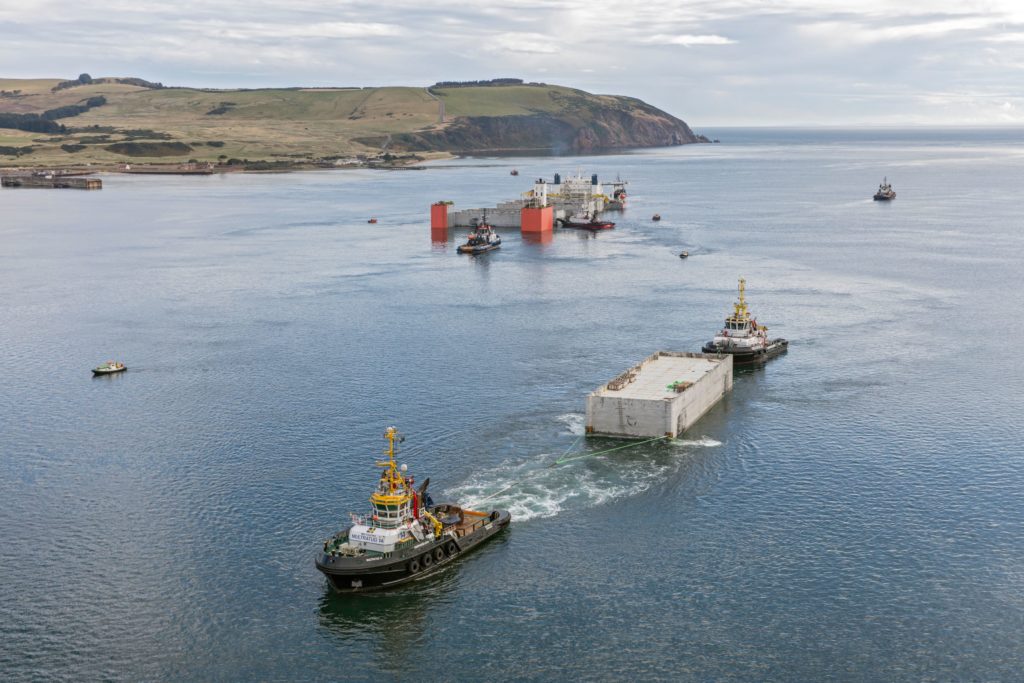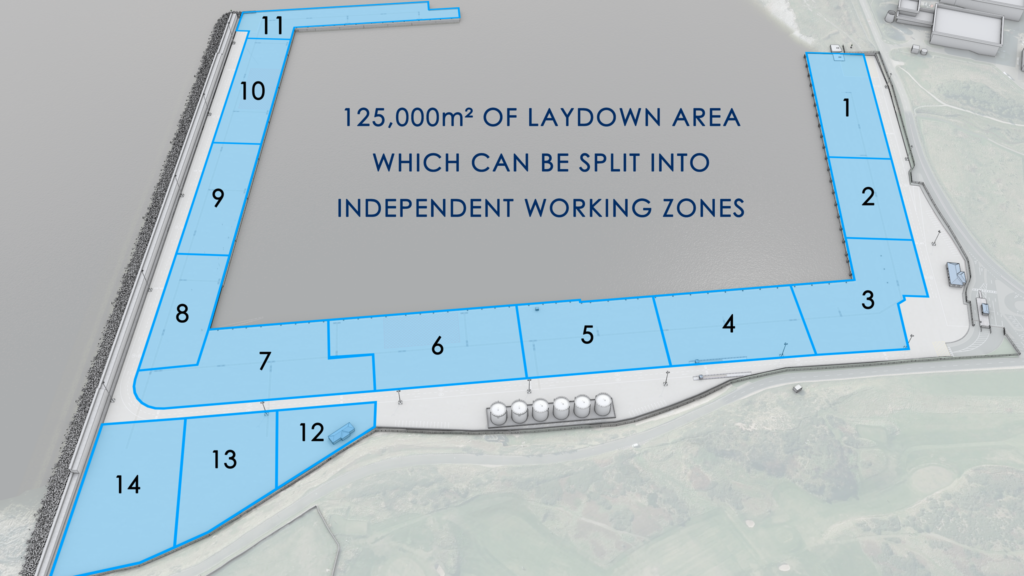
Aberdeen Harbour Board has said its £350million extension project will “revolutionise” the way quayside work is carried out, especially for decommissioning operations.
The port recently welcomed 16 massive concrete caissons, weighing 6,000tonnes each, which will be ballasted down to form a fixed quay element of the new South Harbour.
The finished product will see the expansion broken down into 14 separate working zones, which commercial director Matt North said will mean a “radical change” for ways of working.
He said: “We have always been conscious of the pressure on our customers to secure project working areas on the quayside that they can fully control in terms of safety and legal compliance.
“We believe that South Harbour will be the first harbour in the U.K. that can be segregated in such a comprehensive way across the whole facility. The flexibility and control that this will provide for our customers will be significant, making the planning, execution and cost control of their work considerably easier.”
The expansion is due for completion in 2020 and will allow vessels of up to 300metres, with a 6,000-tonne transfer load to berth alongside.
Mr North added: “South Harbour represents a radical change in marine capabilities for the whole country and will reinforce the services already being provided at the established harbour by our expert City and Regional decommissioning supply chain.
“Within our current facilities we have expanded our quayside capability to include seven new authorised decommissioning work areas, providing greater flexibility for our customers and the ability to accommodate multiple simultaneous quayside projects.
“In 2018, we saw in excess of 10,000 tonnes of material cross the quayside from high-profile projects, such as the Maersk Leadon and Janice, and Shell’s Brent Alpha projects all adding to our extensive track record which spans over several decades. The Harbour has also accommodated materials inbound from Nexen’s Plug and Abandonment Programme.
“We look forward to providing even greater world-class facilities in support of the growing North Sea decommissioning industry.”
Recommended for you


